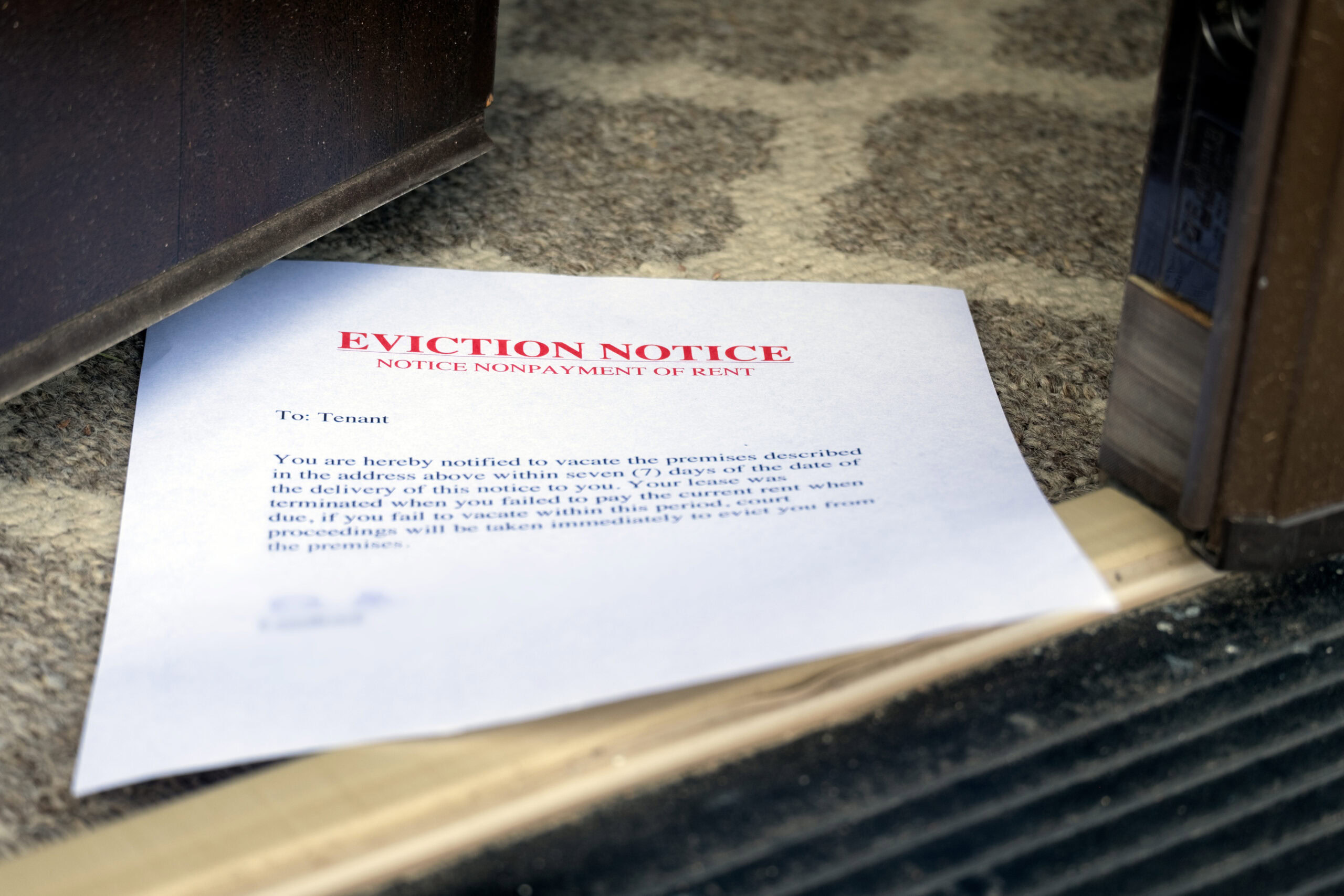In the UK, the most common type of private tenancy agreement is an Assured Shorthold Tenancy (AST). However, there are also other types of tenancy agreements, each with their own advantages and disadvantages. In this article, we look at the different types of private tenancy agreements and the circumstances in which they are used.
What is a private tenancy agreement?
A private tenancy agreement sets out the rights and responsibilities of both the tenant and landlord of a rental property. The landlord could be either a person or company. Most agreements are written down and signed by both parties, but verbal agreements can also be made and give tenants certain rights.
Types of tenancy agreement
Assured Shorthold Tenancies
Assured Shorthold Tenancies are the most common type of agreement. Indeed, most new private tenancies in England are ASTs unless there are special circumstances.
A tenancy can be an AST if all these conditions are met:
- The property is let by a private landlord
- The landlord doesn’t live in it
- The tenant has full control of the property
- The tenancy began after 15th January 1989
Conversely, it can’t be an AST if any of these conditions apply:
- The tenancy began or was agreed before 15th January 1989
- The rent exceeds £100,000 annually, or is less than £250 per annum (£1,000 in London)
- It is a business let, a council house, holiday let, university accommodation, or a tenancy of licensed premises
AST features
An AST always starts with a fixed term. This is normally six months or a year. The tenancy can only be ended during that timespan by mutual agreement or by a tenant breaching the tenancy agreement. If they do the latter, they could be evicted using a Section 8 notice.
ASTs generally have a written tenancy agreement. For information on verbal agreements, see later in this article.
Under the fixed term of an AST, the rent and the terms of the initial agreement cannot be changed without mutual consent of both parties. If both parties agree to changes – for example, if the landlord agrees to let the tenant keep pets – the landlord can either draw up a new contract or add an addendum to the existing one.
At the end of the fixed term, one of four things can take place:
- The landlord can give notice that they plan to reclaim the property
- The tenant can leave (they may have to give notice)
- Both parties can agree a new fixed-term contract
- If none of these things happen, the tenancy becomes a periodic tenancy
Periodic tenancies
A periodic tenancy at the end of an AST automatically continues on a month-to-month basis, on the same terms as the previous agreement, for as long as both tenant and landlord are happy.
At any point during the periodic tenancy, the landlord can give two months’ notice of eviction by serving a Section 21 notice under the Housing Act 1988.
Assured tenancies
Assured tenancies give tenants greater rights and more safeguards against eviction. In a nutshell, as long as the tenant keeps up with rental payments and adheres to the tenancy agreement, they can live in the property as long as they like.
Today, these tenancies are usually offered by social landlords. However, they can apply to tenancies in the private rental sector that began between 15th January 1989 and 27th February 1997.
A tenancy is likely to be assured if all the following apply:
- The tenant pays rent to a private landlord
- The landlord does not live in the same building
- The tenant moved in between 15 January 1989 and 27 February 1997
- The landlord did not issue a notice saying the tenancy was an AST
Tenancies that began after 27 February 1997 may be assured tenancies if:
- The tenant was informed in writing they were an assured tenant before the tenancy began
- The tenant previously had an assured tenancy in the same property with the same landlord
As with an AST, assured tenancies cannot apply to a commercial let, a holiday let, halls of residence, or where the rent is more than £100,000 a year.
Assured tenants can challenge any proposed rent increases after any initial fixed period. They can do this by taking the matter to an independent arbitration service, which will evaluate the increase by comparing it to market rates. Tenants can’t be evicted during this process, and they are allowed to continue paying the previously agreed rent.
The only way a landlord can evict an assured tenant is by providing a court with evidence that the tenant has breached the tenancy agreement. This can include two months’ or more of rent arrears.
Assured tenancies can be transferred from one individual to another. For example, one could pass from a husband to his wife after his death.
Regulated tenancies
Now rare, regulated tenancies were widespread before 15th January 1989.
These tenancies are regulated under the Rent Act 1977. This gives tenants the right to a fair rent, which is reviewed and set by Valuation Office Agency rent officers every two years. Tenants may have a regulated tenancy if they previously had one and signed a new tenancy agreement with the same landlord, even if it was for a different property.
Like an assured tenancy, a landlord can only evict if the tenant breaches the tenancy agreement, such as getting into arrears or causing malicious damage to the property.
Regulated tenancies can be passed on to any partner or family member living at the property after their death.
Excluded tenancies
An excluded tenancy occurs when the tenant shares a property with their landlord or a member of their family. A good example would be a lodger who rents a room in a house, sharing the kitchen and bathroom with the landlord and other family members. These tenancies can be for a fixed period or on a rolling basis.
Tenants have relatively little security. Any deposit they pay is not covered by the government’s deposit protection rules. A fixed-term contract can give some protection against eviction, but the landlord can give notice to quit at any point without the need to go to court. The notice period is usually the same as the rental payment period – usually a week or a month.
Occupiers with basic protection
This is when a tenant shares a building with their landlord, but they exclusively occupy their own accommodation and don’t share any areas except stairs or storage facilities.
A good example is a tenant who has the use of a house, while their landlord has self-contained accommodation in the same property. Students in halls of residence also have basic protection.
Basic protection means the tenant has basic protection against eviction. If a landlord wants to evict an occupier with basic protection, they’ll need to serve the correct notice and get a court order. As with excluded tenancies, any deposit does not have to be protected in a government approved scheme.
Subtenants
Subtenants rent from an existing tenant, not the actual landlord of a property. As long as they have permission to sublet, the original tenant becomes the landlord of the subtenant and has the same legal responsibilities as any other landlord.
The type of tenancy will depend on certain circumstances:
- If the original tenant lives elsewhere, it’ll usually be an AST
- If the subtenant is a lodger, it’ll be an excluded tenancy
- If the subtenant shares the property but has exclusive use of their own kitchen and bathroom, they’ll be an occupier with basic protection.
If the original tenant sublets illegally, both the original tenant and subtenant can be evicted by court order for breach of the tenancy agreement.
Company lets
When a landlord rents a property to a company, the tenancy cannot be an AST. There is no deposit protection scheme and the landlord can serve a ‘notice to quit’ without having to serve a Section 21 or Section 8 notice.
Employment-related tenancies
When an employer provides temporary accommodation to enable workers to undertake their jobs, this is an employment-related tenancy. There are two main kinds – service occupiers and agricultural occupiers.
Service occupiers
A service occupancy is a temporary licence to occupy a property, which expires at the end of the employment. Accommodation is provided because it’s either essential for a person to perform their work duties, or it allows them to carry them out better. Examples would include holiday reps, hotel managers, resident caretakers, and construction workers living close to a site.
Agricultural occupiers
These are farm workers who live in accommodation provided by their employer. Agriculture includes dairy and livestock farming, production of any consumable produce, forestry, plus work on land used for grazing, meadow, pasture, or orchards.
Agricultural occupiers may be protected by the Housing Act 1988 (after January 1989) or – more rarely – the Rent (Agriculture) Act (before January 1989). A ‘qualifying worker’ under either act must have worked in agriculture for 91 weeks out of the 104 immediately preceding weeks.
You can find full guidance on agricultural occupancy here.
Council tenancies
Council tenants rent their property from a local authority or a social landlord on the authority’s behalf.
Councils allocate housing based on a ‘points’ or ‘banding’ system. Priority is given to homeless people, those who currently live in cramped conditions, or have a medical issue which is being made worse by their current home.
Rents are typically lower than for an equivalent private letting.
There are various different types of council tenancy. These include:
- Introductory tenancies. These are essentially trial tenancies that usually run for 12 months. During this period it’s easier to evict a tenant, while the tenant can’t make major improvements, swap the property with another tenant, or apply to the Right to Buy scheme. After successfully completing an introductory tenancy, the tenant then becomes a secure or flexible tenant.
- Secure tenancies. These tenants can stay in the property indefinitely as long as they abide by the terms of the tenancy. After three years they can apply for the Right to Buy Tenants may be able to swap their home with another social housing tenant. Tenancies can be inherited by partners or family members who lived at the property when the tenant died.
- Flexible tenancies. These are offered for a fixed period, usually of five years. After this period, the council can offer a new fixed term or a secure tenancy, or it can refuse to offer a further tenancy. Councils need to give reasons for not renewing and tenants can challenge the decision. Flexible tenants can opt for Right to Buy and ask to swap with another social housing tenant.
- Demoted tenancy. These are given to tenants who have behaved antisocially or previously breached their tenancy agreement. This type of tenancy is essentially a probationary one, which can revert to a secure tenancy after the specified period (normally one year).
Written vs verbal agreements
Most tenancy agreements are in writing. They set out the rights and responsibilities of both the landlord and the tenants. Written agreements make it much easier to resolve disputes because they clearly set out the terms under which the property is let.
It is possible, but unadvisable, to have a verbal tenancy agreement. A verbal agreement is still a contract in law. Once the landlord accepts rent from a tenant, a verbal agreement is considered to be in effect.
The problem with verbal agreements is that they make it harder to resolve disputes. If you are a tenant and you have a verbal agreement, it’s wise to ask your landlord to give you a rent book and a statement of terms that set out:
- When the tenancy started
- The rent payable and its due date
- The term of the tenancy
- Information on rent reviews
You should also note that for most landlord insurance policies to be valid, there must be a written AST agreement in place, a verbal agreement would not be acceptable.
This article is intended as a guide only. Please note that legislation does change, it is always best to check the most up to date guidance on gov.uk. Most landlord insurance policies arranged by Alan Boswell Group also have access to a legal advice helpline where policyholders can seek further advice.






























































